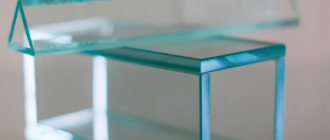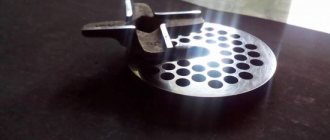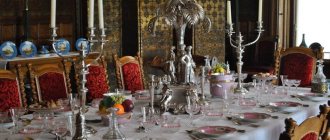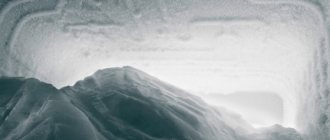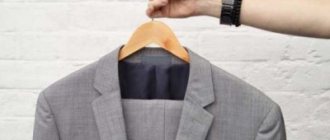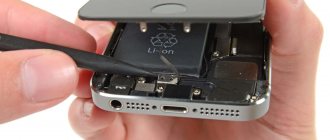Each knife, like any other tool, requires constant proper care, especially since its cutting part needs to be renewed from time to time. It’s not for nothing that people say that you can only cut yourself on a dull knife blade. What usually happens is that the dull blade breaks off from the part being cut off and tears the skin on the hand.
To avoid any accidents and careless injuries, the knife blade must be renewed periodically. We sharpen the blade to a certain angle, which depends on the purpose of the blade and varies from 15 to 45 degrees from the central point.
Sharpening features
During the manufacturing process, based on the professional goals and purpose of the tool, a certain blade shape, thickness parameters and inclination of the cutting edges are selected. It is thanks to the correct inclination of the angles and position of the blade that the most stubborn textures can be processed, since the correctness of the cut is ensured only if certain working positions of the tools are observed.
Optimal knife sharpening angles require maximum pressure on the cutting materials during operation. If the tilt changes, the blades can easily be damaged. It is important to note here that each blade model needs to be sharpened with strict adherence to certain angles. Based on what design features the knife has and what use it is intended for, the optimal sharpening angles are determined.
At the same time, it is undesirable to process some types of professional or chef’s tools (Tramontina and Lansky) yourself; this should be done by a qualified person using special equipment so as not to damage the blade.
Caring for a hunting knife
Basic rules for caring for a hunting knife:
- It is necessary to have your knife professionally sharpened regularly to ensure that its edge is always sharp.
- Over time, the blade becomes dull and sometimes rusts. To give it shine, you need to clean it with steel wool, which is soaked in special oil. And to remove rust, its surface must be treated with polishing paste.
- If the knife handle is made of wood, then caring for it requires special care. Due to the possible drying of the wood, it is recommended to keep the blade away from the stove, warm radiators or open sunlight. If the knife handle is made of leather, it can also be treated with special products.
What is the sharpening angle of a knife
Often, this value is rarely indicated in the technical specifications for a particular tool when purchasing it, although it is one of the important criteria that affects the cutting property of the tool. The lack of relevant information may cause some difficulty for the owner in understanding at what angle to subsequently sharpen the tool. To avoid this, you can use the table below for sharpening angles of knives. However, before that, let's figure out what this value actually is.
The area where the slope on the blade smoothly meets the edges of the cutting edge is called the approach. The angles of convergence of the approach on the two sides of the knife blade are called the “sharpening angle.” Ideally, the blade may have no leads; in such cases, sharpening angles are called trigger angles. But instruments with such a design can be found quite rarely. These mainly include products such as professional Japanese kitchen knives.
The sharpening angles are directly responsible for the purpose and type of work for which the knife was created. The smaller the sharpening angle, the easier it is to cut and the knife becomes sharper, but it quickly becomes dull and needs to be sharpened again. The greater the sharpening angle, the more similar the blade becomes to an ax and the longer it keeps its sharpness.
The procedure for using sharpening devices and objects at home using the example of a kitchen knife
Let's take a closer look at the work of sharpening a kitchen knife that is common for daily use, giving as an example the described sharpening methods:
Sharpening stone:
- soak the stone in water for 15 – 25 minutes;
- the knife is installed perpendicular to the stone;
- the sharpening angle is set to 30 degrees, determined visually (90 degrees divided by 3 hours
- ti);
- the blade is directed away from itself by the cutting edge;
- reciprocating movements from the handle to the tip of the knife are carried out along the entire plane of the stone on both sides of the blade until the desired result is obtained.
Dishes as a New Year's gift: 5 options that will please almost any woman
Mechanical sharpener - use the step-by-step instructions described above.
Electric sharpener - similar to the point above.
Musat:
- holding the handle, the device is installed in a vertical position;
- the knife blade is leaned at an angle of 30 degrees;
- circular movements are made with the blade while smoothly lowering from top to bottom;
- the actions are repeated on both sides of the knife until the desired result is obtained.
Sharpening and grinding machines:
- protective equipment (glasses, overalls) must be used;
- the sharpening angle of 30 degrees is visually determined;
- the pressing force of the sharpened tool against the rotating abrasive is below average;
- Constant control of blade overheating occurs by immersion in coolant;
- processing is carried out on both sides of the blade, to the required condition.
Lansky sharpener:
- the blade is fixed in an aluminum clamp;
- the guide with the stone holder is inserted into the marked hole on the holder corresponding to the desired sharpening angle, and the desired cutting angle of the blade is formed;
- reciprocating movements are performed in the required quantity on both sides of the blade until sufficient sharpness is obtained.
Table of sharpening angles for different types of knives
In order to perform high-quality processing and maintenance of tools, it is necessary to maintain the basic sharpening angles of knives for various types of tasks with their use. To control the correct sharpening of corners, you can use a table that presents recommended values for various types of knives:
| Knife types | Sharpening angles |
| Dining rooms for serving | 55° — 60° |
| Kitchen household | 30° — 35° |
| Kitchen professional | 25° — 30° |
| Chefs professional | 20° — 25° |
| Cutting for fish | 25° |
| Cutting machines for meat and large fish | 30° |
| Vegetable cutters | 35° |
| Fruit | 10° — 15° |
| Cutting for root vegetables | 22° — 25° |
| Boning machines for meat | 25° — 30° |
| Chopping axes | 25° — 30° |
| Sirloin | 10° — 15° |
| Penknives | 20° — 25° |
| Tourist / hunting, priority is spiciness | 30° — 35° |
| Tourist / hunting, wear resistance is a priority | 40° — 45° |
| Shoe repair | 30° — 40° |
| Shoe cutting machines | 20° — 25° |
| Universal carpentry | 30° — 45° |
| Chopping (machete) | 45° — 60° |
Briefly about Japanese knives
Japanese knives with their variety of shapes and functions are a separate big topic. What unites them is their unsurpassed quality and the traditional Japanese weapon steel of the blade - tamahagane.
Like any quality tool, Japanese knives require care and proper handling. In addition, such a kitchen tool costs an order of magnitude higher.
Independent determination of the knife sharpening angle
When the question arises of how to measure the sharpening angle of a knife, you can act in various ways. Many people purchase special tools for this purpose. However, why not save money and use the budget method described in the instructions below.
Take scissors (non-cutting ones will do) and place the cutting edge between their ends so that there is no gap. On a white sheet of paper, draw a line with a dot at the end. We compare with it the angle between the blades of the scissors.
Opposite the opposite blade (closer to the edge) we place a thin but visible point.
It is important that it is not greasy. The accuracy of the measurement depends on this.
Draw a second line (connect two points with a ruler). We should have a corner.
We take a protractor and determine the degree of the angle. Each indicator will be individual.
In small kitchen knives the sharpening rate may be similar
Please note that knives with a Scandi trigger must be sharpened only at the calculated angle. To avoid mistakes, you need to double-check it two or three times, using different scissors.
Having figured out how to determine the sharpening angle of a knife, you can begin to select sharpening devices.
Checking the sharpness
A well-sharpened knife should easily shave the hair on your forearm.
After sharpening the next knife, from wrist to elbow I don’t have a single hair left, and only on my left hand. It looks cool - one arm is hairy, and the other is carefully shaved)))
Poems taken from the excellent public brutalica.ru
The knife should shave hair, and, as they say, “with a rebound.” That is, without pressure and at the slightest touch.
But in reality, such sharpness is not needed.
Women especially will swear. After all, they cook delicious dinners using a knife. And with such sharpness, you can cut yourself like hell. And you won’t feel anything, you’ll only notice when the blood starts flowing. Tested it myself.
Therefore, a well-sharpened kitchen knife should easily cut a soft, fresh loaf of bread, chop tomatoes for salad (just not store-bought balls from abroad, but good, juicy tomatoes with thin skin, the kind you can find at grannies’ markets) and easily cope with cling film, also called stretch film (if the knife is dull, it is easier to tear this stretch film with your hands than to cut it).
Does the knife pass all three tests or at least one of them? Congratulations! You managed to sharpen the knife properly. If not, then you will have to work harder...
Blade material and knife blade shape
The main materials for the manufacture of blades are metal alloys. The method of their manufacture can be different, from forging to stamping, but they have one thing in common - metal. The metal of the blade is hard; in addition, it must be elastic so as not to break the blade of the knife if it is slightly misaligned.
Also important in the characteristics of the metal is wear resistance, or the tendency to hold an edge. At the same time, the excessive fragility of the blade, which is observed with increased hardness, often leads to chipping of part of the cutting edge upon impact.
Most often used for making knives:
- carbon steels, they have high strength characteristics, are relatively cheap, but at the same time are prone to corrosion;
- alloy steels, with the addition of strengthening and elasticity additives, in this case the metal is a little more expensive, but the alloying additives increase the strength characteristics and resistance to rust;
- damask and Damascus steels, special grade metals obtained by smelting or forging, are distinguished by increased characteristics of hardness, elasticity and resistance to dullness, and at the same time often have a high cost;
- titanium and zirconium alloys, quite expensive metals that have excellent performance characteristics and resistance to corrosion, but at the same time are not widely used due to their cost;
- carbon steel knives coated with various coatings, which are actually metal plates of normal operational parameters, with an inflated cost due to the coating.
The hardness of steel is one of the main characteristics when choosing a sharpening angle, but not a determining one.
In addition to the hardness of the metal, it is also necessary to take into account the shape of the cutting part originally present on the blade. Modern knives can have the following sections:
- wedge-shaped, most common on domestic knives, in this case the edge of the blade is a symmetrical triangle;
- razor, the sides of the triangle have a concave shape, this allows you to keep the sharpening at 15-20 degrees;
- chisel, common on the products of Japanese craftsmen, in this case the blade is sharpened only on one side, the other side is completely flat;
- chopping, sometimes called Chinese, a section that came from Japan with convex wedge edges, this type of sharpening allows you to maintain the shape of the cutting edge for a long time during chopping blows.
Depending on the hardness of the steel and the cross-sectional shape of the blade, the angle of the edges is selected. In addition to these, there are other types of knife sharpening, but they are less common.
It is worth noting that, despite the existing table of sharpening angles, it is selected by a person independently, for the most convenient use of the blade.
Why does the knife get dull?
Sharp objects are dangerous because you can get hurt when using them. But even more trouble will come from a dull chef's knife, which can slip and easily injure your hands.
The blades sold in the store are sharp and easy to work with. But their shelf life depends on operating conditions.
Following a number of recommendations will help keep your kitchen knife sharp longer:
- during storage, the cutting edge should not touch surfaces that have a high density;
- cutting should take place on special boards made of wood or plastic;
- blades of all types must be used for their intended purpose, avoiding shock loads on blades whose sharpening has a small degree;
- Immediately after use, knives should be washed and dried.
The sharpness of the cutting edge decreases for several reasons:
- Impact of organic acids contained in products on the blade material.
- Impacts from a fall.
- Cutting on hard surfaces such as stone countertops or ceramic cookware.
- Uneven load on the cutting blade when the composition of the products is uneven (the blade hits bones, tendons when cutting meat).
- Exposure to aggressive chemicals and high temperatures during cleaning.
- Improper use.
If the knife is intended for cutting the fillet of fish, then when opening cans with it, the blade will be damaged. The nature of the RK violations depends on the material from which the blade is made.
Knives made of stainless steel are resistant to aggressive environments, but without proper care, rust appears on the surface of the blade. Such blades are easy to sharpen, but this process must be carried out more often.
Carbon steel has increased strength, such blades are more difficult to sharpen, but they retain their sharpness longer. With insufficient care, the metal quickly becomes covered with rust.
By combining hard and soft steel in industrial production, alloys are created that imitate the blacksmith forging inherent in Damascus blades. Knives are made primarily for hunters using this method.
Products made from zirconium alloy are characterized by increased fragility. These ceramic knives are designed for smooth, soft products and keep their blade sharp for a long time. A special tool is required for sharpening.
Calculate the angle of descent on the knife.
Cutting edge and abrasives for sharpening
Despite the apparent simplicity of sharpening the blade, in fact the shape of the cutting edge looks quite complex. The sharpening angle creates only the general edges of the cutting edge; the edge itself is formed by the leads, narrow strips of the blade, which constitute the edge that cuts the material.
In order to remove the cutting edge of the blade, it is necessary to process the slopes with abrasive, creating a wedge.
Selecting an abrasive is not an easy task; in the modern world, various types of synthetic sharpening materials are widely used, such as electrocorundum or diamond bars with a binder.
But, as before, professional sharpeners believe that the best result is achieved only when using abrasive bars of natural origin: novaculite or Arkansas, Japanese water stones.
Sharpening knives requires the mandatory use of oil or water. This allows you to wash away dirt and solid abrasive particles from under the blade, which would otherwise scratch the blade; in addition, the presence of lubricant will protect the surface of the stone from ingrained dirt and metal shavings.
It should be noted that the surface of the sharpening stone must be perfectly flat, otherwise the cutting edge will be wavy, which will have an ambiguous effect on the quality of sharpening.
You need to be especially careful when sharpening a knife one and a half times; in this case, there is a risk of cutting your hand when sharpening on the sharp edges of the blade. For perfect sharpening, it is necessary to alternately change the grain size of the stone, moving from coarse grain, whose task is to roughly create edges and descents, and ending with polishing, which polishes descents and creates leads.
The grain size of the abrasive is determined by the size of its particles; the larger the particle size, the rougher the processing of the blade edges.
It is optimal to have 2-3 whetstones with different values for sharpening a knife. The first one is for rough sharpening, the second one is for edging and the third one is for grinding. Although the final straightening can be done with a polished piece of steel, a leather belt or a ceramic block.
Work as a musat
Musat is a metal tool designed for straightening knives. It’s not hard to remember how meat department sellers used to rub the cutting edge of one knife against the butt of another. This happened due to the absence of musat at the workplace.
The tool corrects microscopic bends in the cutting edge by running the blade along the side grooved surface. The hard surface of the musat has a slight abrasive effect, as a result of which a small layer of knife metal is removed during the dressing process.
Before editing, you should check the hardness of the knife blade. If it is less than 50 HRC, then the musat will remove too much metal, and the knife will quickly become unusable. If the hardness exceeds 60 HRC, then the use of musat may become useless, because with the appropriate mechanical characteristics, edge bends cannot be corrected.
There are several techniques for using musat. The most common involves the following algorithm of actions:
- Place the heel of the blade closer to the guard on the handle of the tool.
- Position the blade at an angle of approximately 20°. Since only editing is done, the blade is not sharpened, the angle can be set approximately.
- Run the entire cutting edge (from the heel to the tip of the blade) along the ribbed surface of the musat, while simultaneously moving the blade away from the guard.
- Change the side of the blade and repeat the manipulation.
- Treat the blade in this manner on both sides until cutting properties are restored. Usually 5-10 repetitions are enough for this.
You should not run the blade over one point of the musat. Moving the blade along the tool prevents wear. Otherwise, the device may begin to leave scratches.
You should not rush while working. Speed editing looks impressive in cooking shows, but is completely unnecessary in practice.
The type of musat used should be taken into account. Modern varieties with a ceramic surface or diamond coating have a significant abrasive effect. Such models differ in the principle of operation from the classical tool; they simultaneously remove the metal of the blade. When using such tools, you should more accurately set the angle of the blade and reduce the number of approaches when editing to two to four.
What determines the sharpness of a knife?
Sharpness is the main characteristic of a cutting tool. The higher its degree, the easier the knife enters the material. What does this characteristic depend on?
- Properties of steel. The composition and grade of the metal directly affect the properties of the blade.
- Features of mechanical processing of the part.
- Temperature treatment during the hardening process.
- Features of the cross-section and dimensions of the blade.
- Sharpening quality. The main characteristic that affects sharpness.
We see that the effective quality of a knife depends on the coordinated work of several specialists. Fortunately, modern industry does all this work for us; all we have to do is maintain the tool in working condition, which involves its timely and correct sharpening.
Possible defects on knives
Not every hunter uses a blade correctly. Because of this, various defects appear on the surface of the cutting edge. These include:
- burrs, microcracks;
- tip breakage;
- chips, nicks.
Strong impacts can break the handle, shank, or bend the blade. Since high-quality hunting knives cost a lot of money, the owner of such a tool wants it to last as long as possible. To do this, you must adhere to the rules for using the tool and be able to sharpen it.
Blade sharpening
Proper sharpening of knives is carried out in the following order:
- Preparation. The sharpening block is placed on a flat surface; if necessary, a towel or cloth is placed under it so that when working, it does not slip on the table surface. It is also worth placing a container of water or oil on hand to wet the blade.
- The knife is placed with the blade on the leveled surface of the block at an angle of 40-45 degrees with the tip away from you; it is best to install an angle limiter on its blade. Stationery clips performed well in this regard. This will help maintain the sharpening angle.
- The blade is sharpened evenly by moving towards itself, the cutting edge should be smooth when exposed to light, without wavy bends. The wedge itself is symmetrical, the edges are the same in size.
- After rough straightening and creating slopes, it is the turn of a finer-grained block. The metal is periodically wetted with water. This is necessary to wash away any remaining abrasive and metal dust. After the blade slopes are ground, the bars must be washed in running water and soap, the knife itself must be washed and wiped thoroughly.
When editing, you should ensure that the sharpening angle is maintained; it is for this reason that it is recommended to use limiters.
They will help you initially maintain the angle, and later, as you gain experience, you can sharpen the blade “by eye.”
Practice
Theory is good, but you need to practice as much as possible, then your hands will remember and the whole process will settle down in your head.
The most important thing in sharpening is maintaining the angle correctly. And this requires practice. The more you practice, the better you will get. Well, as in any business that requires skill and patience. I dare to assure you that you will not be able to sharpen a knife the first time. But with due diligence... well, you get the idea.
Read also: Uranium mining in Russia map
Tool
So, for sharpening you need a whetstone, a little bit of any machine oil and a knife, which we will sharpen.
Grindstone
Buy a simple block at any hardware store. It comes in the shape of a boat, but it’s better to buy a double-sided one and a longer one. When you start to succeed, you will buy something more respectable. Diamond bars, for example...
The bar should not be shorter than 150 millimeters. You can see why this is so simply by trying to sharpen on bars of different lengths. The longer the block, the more convenient it is to sharpen.
Oil
We will need machine or gun oil. Oil is needed to lubricate the whetstone during the sharpening process so that the whetstone does not become clogged with metal particles.
Under no circumstances should you use organic oil, such as sunflower oil. The block will instantly become greasy and can be thrown away.
Knife
For the first time, do not take a new knife or the knife you use all the time. Find some knife that you don't mind ruining. This is how you train. My knife for experiments was this, old, old kitchen knife.
Well, we have the tool, let's start sharpening.
Sharpening process
Let's get comfortable. Place the block on the table in front of you, with the short side facing you. You can place something like a rubber mat or newspaper under the block so that it does not slide on the table when sharpening.
We take a knife and start sharpening it.
The sharpening process takes place on sharpening stones of different grain sizes. From large to small. The larger the grain, the faster the metal is removed from the blade. And the smaller the grain, the smaller the microsaw on the cutting edge, and the smaller the microsaw on the cutting edge, the longer the knife will remain sharp.
Since we are sharpening a kitchen knife, we do not need razor sharpness; it is enough that the knife cuts food well. I will tell you about checking the sharpening result below. And now I will repeat.
The block lies on the table, with the short side facing you and the large grain facing up. Easily and naturally, without much pressure, we begin to form the cutting edge. Pre-drop a few drops of oil onto the bar.
The movement shown in the picture below.
Please note that the movement of the knife on the stone should be clear and consistent. From mouth to tip.
They brought it to the edge, tore it off and again. Repeating this movement many times, we achieve the formation of a burr on the back side of the blade, along the entire length of the cutting edge.
Repeatedly - I “bent” this a little, of course. Kitchen knives, if they are not “Japanese”, are made of fairly soft steel; it will be enough to make 40-50 movements to obtain the desired result. Don’t forget to add a few drops of oil as the bar becomes dirty.
A hangnail can be seen or felt. Run your finger across the cutting edge, you feel that your finger seems to be clinging to something. There is some roughness felt. This is a burr, which should be uniform along the entire length of the cutting edge.
Well, we're done with one side. Now you need to perform the same actions on the other side.
You can sharpen the other side by holding the knife by the handle with your left hand, but for example, this is not convenient for me, so I hold the knife in my right hand, but I sharpen it not away from myself, but towards myself.
We carry out the procedure for obtaining a burr along the entire length of the cutting edge on the other side of the knife.
Now you can move to the finer side of the whetstone. On the shallow side of the bar, you need to repeat everything described above.
That's the whole sharpening process. It seems not difficult, but it requires certain skills and a lot of patience.
Types of sharpening
There are several types of knife sharpening:
| Types of knife sharpening | Description |
| Lenticular | The edge of the blade is sharpened, and the bend of the blade can also be processed. With such sharpening, blades are distinguished by a high level of cutting ability; they are able to “work” even on thick material, and, if necessary, serve as a chopping or piercing tool. Lens-shaped sharpening is carried out exclusively by hand, therefore it is used only in the production of professional knives - kitchen, hunting, tactical. |
| Razor sharpening (flat) | It is carried out at a minimum degree (10-20) and is suitable for processing only surgical instruments, razor accessories, and blades for fine cutting. In everyday life, such sharpening is done for hunting knives for special purposes - for example, skinning knives, fishing knives. |
| Wedge sharpening | It is rarely used, because after it the cutting ability of the tool increases, but the strength of its blade decreases. During the process, the side surfaces of the blade must be grinded and polished, but at home this is quite problematic. |
| Pentagonal sharpening | It is widely used for kitchen and travel knives; even household devices for this process often perform just this type of knife sharpening. After it, the blade slightly loses its tactical abilities, but its service life does not decrease. |
| Double-sided asymmetric sharpening | Combines enhancing the tactical and physical abilities of knives. The result will be ease of cutting even the hardest products, flawless chopping of material without any effort. This type of sharpening is often used in the manufacture of Japanese kitchen knives, which are of high quality. A special feature of knives with double-sided asymmetric sharpening is that the edge of the blade does not enter the cut on the product, but is constantly held on top. |
There are many ways to sharpen knives, they will differ depending on the tool used for this.
Bottom line
When purchasing a hunting knife, it is best to choose medium-hard steel. Indeed, in case of unforeseen situations in the forest, you can correct the blade with an ordinary whetstone or, if you don’t have one, use any found stone with a smooth surface for sharpening.
Previous
Making knivesKnife from scissors: creation in 4 steps
Next
KnivesHow to use a knife correctly: mastery of kitchen and cutlery
How often should you sharpen?
It is believed that knives need to be sharpened as they become dull, but experts recommend this “event” be carried out at least once a week. In this case, it will be possible to maintain the cutting ability of the tool, and the sharpening itself will take place quickly and efficiently.
If we are talking about manual/mechanical sharpeners with wheels or musat, then they can be used at least every day - the knife will be sharp, but not for long. These devices are needed for straightening the knife, and not for fully sharpening it.
Common Mistakes
So, we found out how to properly sharpen knives by hand. Let's list the common mistakes of inexperienced consumers to summarize. Definitely not worth it:
- Place the stone directly on the table, without a backing.
- Use only one water stone for sharpening.
- Wet the stone only once.
- Sharpen dirty and greasy knives.
- Apply excessive pressure on the knife while sharpening.
- Violate the factory sharpening angle.
- Finish sharpening ahead of time without removing the burrs completely.
Such actions can reduce the efficiency of your work or even lead to damage to the blade.
Did you like the article? Have you read to the end?! Using the promotional code Stone we give a DISCOUNT on your purchase in the cart!
What knives cannot be sharpened yourself?
To begin with, it is not recommended, in the absence of experience, to sharpen on your own at home those blades that are of some value or are especially convenient and necessary for work. If you sharpen them incorrectly, you can seriously damage the blade. In such cases, it is better to gain experience on some less valuable samples, and then, if you have the skill and appropriate tools, start processing other samples.
In addition, difficulties may arise with sharpening serrated knives - knives with a serrated or wavy cutting edge. Of course, there are household sharpeners designed for such blades, but there are many types of serrators; in other models, you can restore the sharpness of the edge yourself only with experience, specific skills and suitable tools, and even this is not always possible.
As you can see, the process of sharpening knives is not so simple. When taking it on, you need to imagine the procedure, the strengths and weaknesses of a particular sharpening tool, as well as the properties and purpose of the blade itself. If all this is available, there will be no problems with sharpening.
How to properly sharpen blades made of different steels
Products made from some metals require special processing. Blades made of Damascus or damask steel, which are highly valued by hunters, stand out here.
Damascus steel
To preserve its integrity, sharpening is possible only by hand, since the composition contains hard and soft alloys.
To check the strength of the metal, immediately before sharpening, the sharpness of the edge is determined: the sharper it is, the harder the steel itself.
Another feature of the process is sharpening, which is carried out only along the blade. At the beginning of the work, a fine-grained sharpening stone is used, followed by a transition to “velvet” sandpaper.
Bulat steel
All work is carried out exclusively on a wet block. The process begins with a whetstone with large grains and ends with a small grain. Finishing grinding is carried out on ceramics.
How to choose a sharpening machine?
For household work, it is best to use electric models for household use. Today these are universal units with a desktop installation method that cope with the restoration of blades not only of knives, but also of axes, chisels, all kinds of cutters and scissors.
It is advisable to give preference to knife sharpening machines with an adjustable angle, which will initially improve the quality of the operation. Moreover, it is important to pay attention to the configuration of the working equipment. Firstly, much more sharpening capabilities will be provided by a machine that allows the use of an abrasive disc and tape. Secondly, it is more convenient to use a setup with two circles on different sides. The fact is that the process of point correction may require the use of abrasives with different degrees of grain size. To avoid wasting time on reinstalling them when moving from one circle to another, it makes sense to take care in advance about the possibility of installing two elements simultaneously from different sides.



